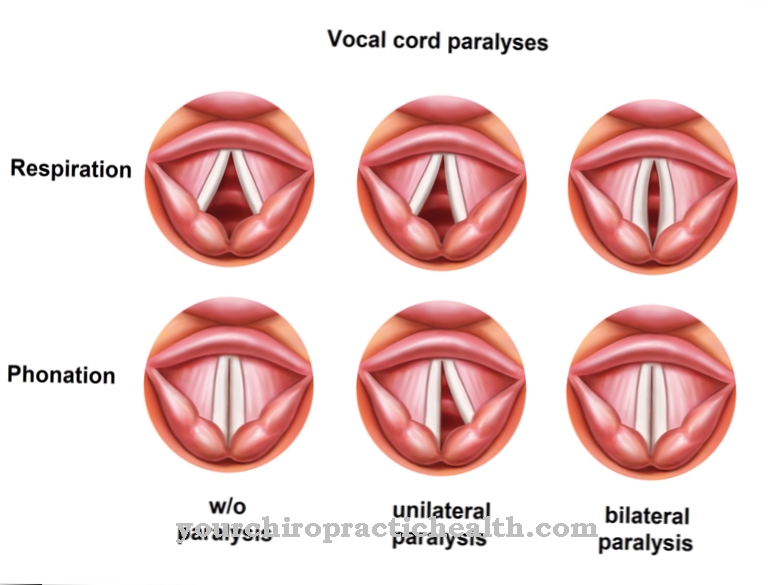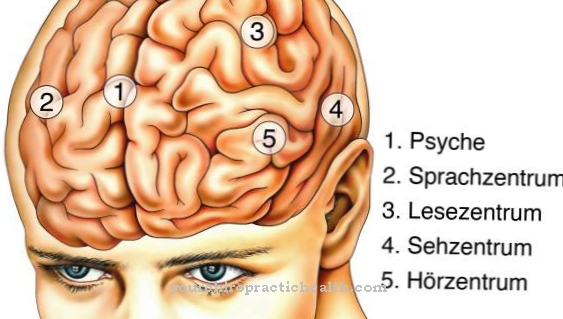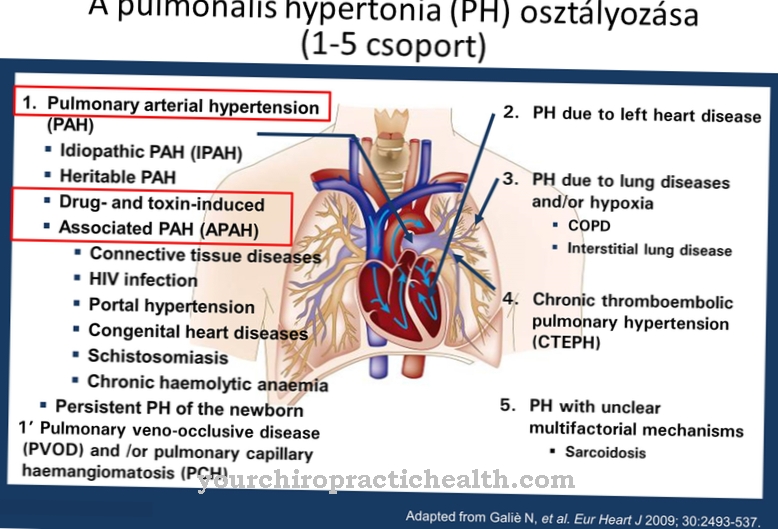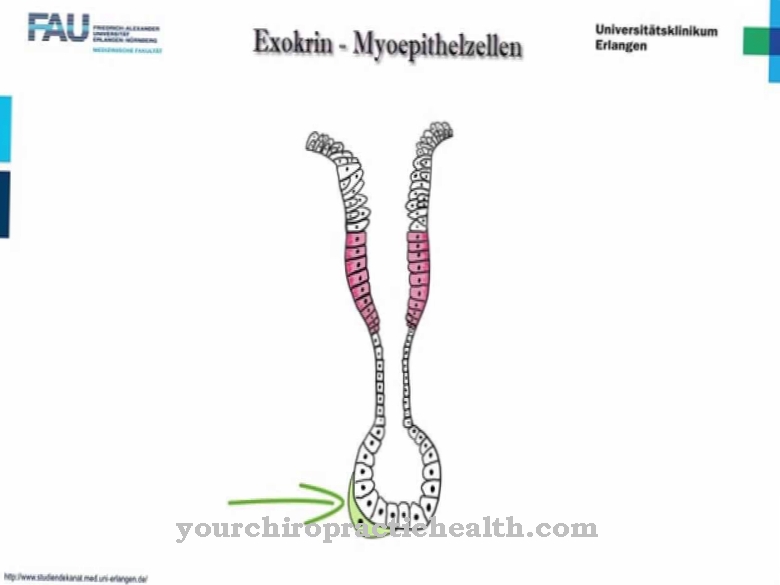The Parathyroid assumes an essential function in the human body through its participation in the regulation of the calcium and phosphate balance. It is therefore all the more important to recognize and treat symptoms that indicate diseases in good time.
What is the parathyroid?

The Parathyroid glands, which in technical terms is also called Parathyroid gland are of great importance for certain body functions and are located directly behind the thyroid gland.
Because they release hormones directly into the blood, they are often referred to as endocrine glands. The parathyroid glands are primarily responsible for the formation of the parathyroid hormone, which regulates the calcium and phosphate balance in the body. As a result, the parathyroid takes on important tasks of the human organism, which can be restricted in diseases such as overactive glands.
In order to check the correct functioning of the parathyroid glands, the calcium, phosphate and parathyroid hormone levels in the blood are measured during medical checks. Ultrasound, computer tomography, magnetic resonance tomography or parathyroid scintigraphy can also be used to examine the condition and functionality of the parathyroid glands.
Anatomy & structure
The Parathyroid is composed of four individual small glands, which are also known as epithelial bodies and are located directly behind the thyroid gland in the neck area.
Normally there are two glands on the right and two on the left, whereby a distinction is also made between the upper and lower parathyroid glands depending on the location. Overall, humans have four parathyroid glands, but their size and shape can vary from body to body.
It is assumed, however, that parathyroid glands usually weigh between 30 and 70 mg and are approximately 5 x 3 x 1 mm in size. In addition, it has been proven that around 10% of people have more than four parathyroid glands, while others only have three or fewer in their bodies in rare cases.
Functions & tasks
They are of great importance Parathyroid mainly due to their special tasks in the human organism. One of its most important functions is the production of the so-called parathyroid hormone, which regulates the calcium and phosphate balance in the body.
First of all, the parathyroid hormone influences the formation of vitamin D3 in the kidneys, which increases calcium absorption from the intestine. This leads to a reduced excretion of calcium and increased phosphate in the body. When the calcium level falls, the parathyroid hormone level is increased, while when the calcium level rises, the hormone release is reduced within a few minutes.
On the bones, in turn, the parathyroid hormone breaks down the structural substance and thus a simultaneous release of phosphate and calcium. In addition to building bones, the regulation of these two substances also plays an important role in nerve impulse conduction, muscle contraction, blood clotting and cell metabolism.
It is all the more important that the calcium level is kept in a standard range of 2.2 to 2.6 mol / l, since even minor discrepancies can lead to diseases.
Illnesses & ailments
Because of these functions, it is particularly important to treat diseases of the Parathyroid to recognize and treat in time. Above all, the primary hyperfunction is a frequently occurring disease, which is also known as primary hyperparathyroidism, or pHPT for short, and describes an excessive production of parathyroid hormones.
This excess leads to an increased calcium level, which can manifest itself in bone pain or broken bones. Severe itching, caused by deposits of calcium phosphate crystals in the skin, is a symptom of pHPT. Conjunctivitis or hardening of the arteries can also result from primary hyperparathyroidism, which in most cases is caused by a benign enlargement of a parathyroid gland, a so-called parathyroid adenoma.
In addition to primary hyperparathyroidism, there is also a secondary overactive parathyroid gland, the cause of which is a disturbed vitamin D metabolism. Due to a reduced vitamin D level in the kidneys, a low calcium level and an increased phosphate level can be found in the body.
As a result, the parathyroid glands constantly produce parathyroid hormones, which increase PTH levels. The disease then manifests itself mainly as kidney stones, bone pain or stomach ulcers and mostly affects dialysis patients. In severe cases of overactive parathyroid glands, depression or disorders of concentration, consciousness, motivation and cardiac arrhythmia also occur.

















.jpg)







.jpg)


